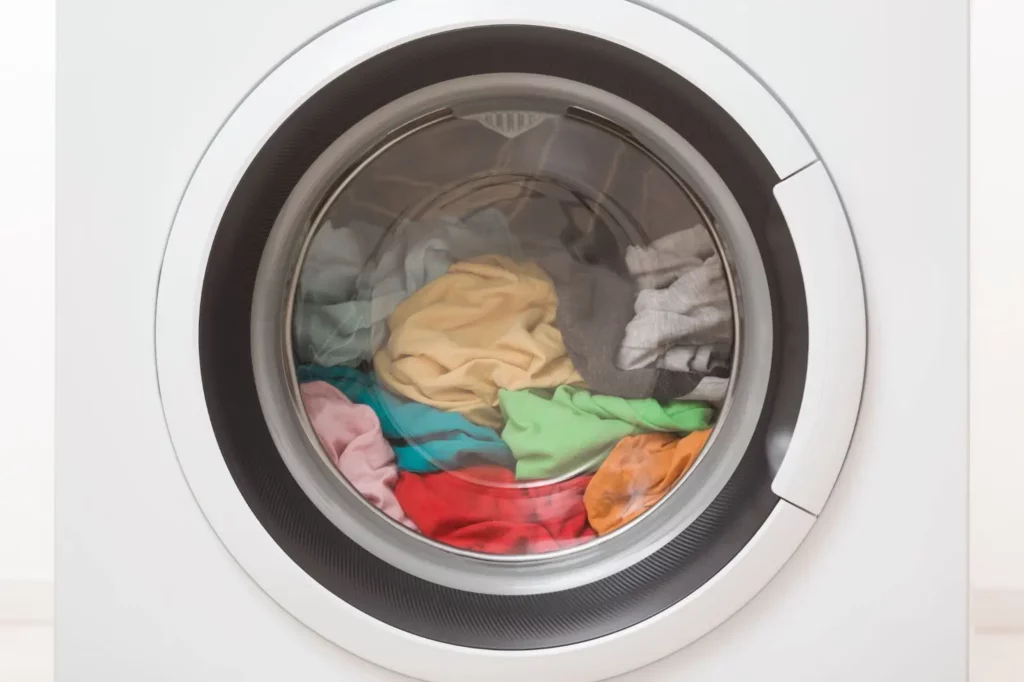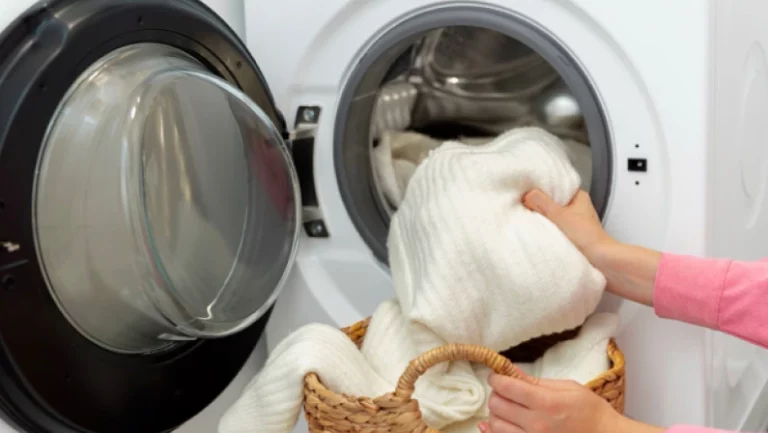Drying clothes in a dryer is a routine part of laundry day, but mixing different colors can be a nerve-wracking decision. While it might seem convenient, there are several factors to consider to prevent laundry disasters.
This guide explores the risks and considerations involved in drying different colors together and offers practical advice to keep your clothes looking their best.
Why Do Colors Bleed in the Laundry?
Color bleeding occurs when dye from one fabric transfers onto another, usually due to exposure to water, heat, or friction.
This can happen during washing, drying, or both, resulting in stained clothes and ruined garments. Understanding what causes colors to bleed can help you take preventive measures.
Is It Safe to Mix Different Colors in the Dryer?
For questions like, “can I dry white clothes with colors?” Mixing different colors in the dryer can be risky, depending on the types of fabrics and how colorfast they are. Generally, caution should be exercised to prevent color transfer and fabric damage.
There are some scenarios where mixing colors might be safe, but it’s essential to know the specifics of each fabric type and color stability.
What Are the Risks of Drying Different Colors Together?
Before deciding to dry different colors together, it’s important to understand the potential risks involved.
1. Color Bleeding
Color bleeding is when dye from one garment transfers to another, leading to unwanted stains and discoloration. This usually happens with new or brightly-colored clothes that haven’t been washed enough times to release excess dye.
2. Fabric Damage
Different fabrics may have varying heat tolerances. Mixing fabrics can lead to overheating and potential damage to more delicate materials. This can result in weakening fibers, pilling, or even holes in your clothes.
3. Shrinkage
Some fabrics are more prone to shrinkage than others, and mixing different materials in the dryer can exacerbate this. Uncontrolled shrinkage can cause clothes to lose their shape and fit.
4. Lint Transfer
Lint from one garment can easily transfer to another in the dryer, especially if you’re mixing heavy and lightweight items. This can leave your clothes looking dull and unclean.
5. Damage to Embellishments
Clothes with embellishments like beads, sequins, or embroidery can get damaged when mixed with other fabrics. The friction and heat can cause these decorations to come loose or fall off entirely.
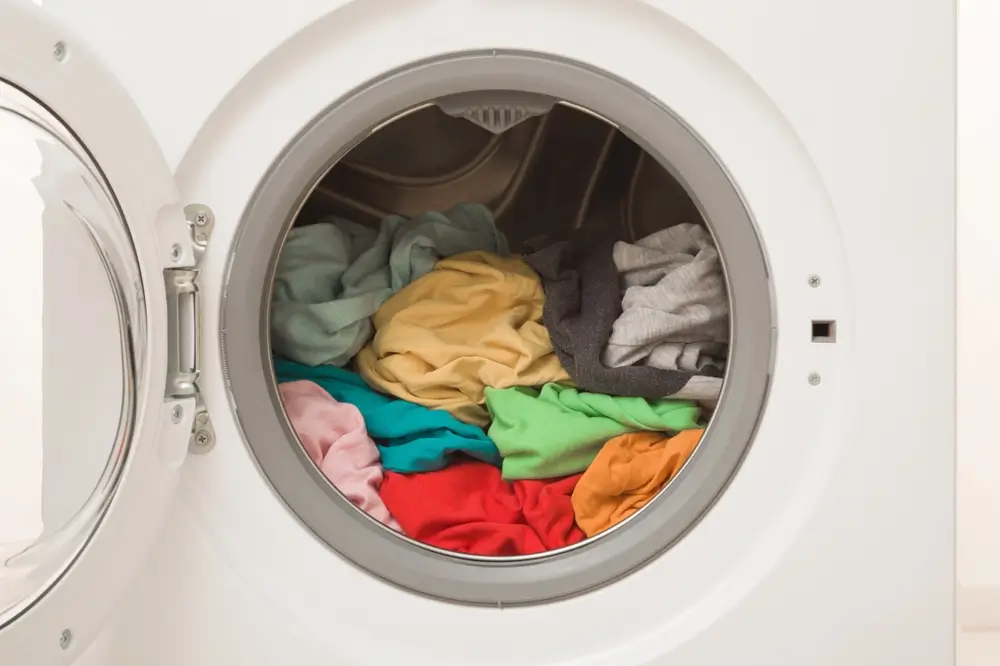
Which Fabrics Are Most Prone to Color Transfer In the Dryer?
Can you mix colors in the dryer? Or what colors go together in laundry? Well, certain fabrics and conditions make color transfer more likely to occur when drying.
1. New or Unwashed Garments
New clothes often have excess dye, making them more prone to color bleeding. Washing them separately at first can help reduce the risk.
2. Bright and Dark-Colored Fabrics
Bright and dark colors tend to bleed more than lighter shades, especially if they haven’t been washed multiple times.
3. Delicate Fabrics
Delicate fabrics are not only prone to damage but also more likely to suffer from color transfer. These should be cared for individually to maintain their quality.
4. Items with Prints or Patterns
Garments with prints or patterns can both bleed and be susceptible to picking up dye from other items, leading to a muddled design.
5. Mixed Fiber Fabrics
Fabrics that are a blend of different fibers can have unpredictable reactions to heat and moisture, increasing the risk of color transfer and damage.
How Can You Test for Colorfastness Before Drying?
Testing for colorfastness can save you from potential laundry disasters.
Here’s how you can carry out a simple test at home.
1. Prepare a Test Area
Choose a small, inconspicuous area of the garment to test, such as an inside seam or hem.
2. Moisten a White Cloth
Dampen a white cloth or cotton swab with water. The cloth should be wet but not dripping.
3. Apply to the Garment
Press the moistened cloth onto the test area and hold it for a few seconds to see if any dye transfers to the white cloth.
4. Check for Dye Transfer
Examine the white cloth. If any dye has transferred, the garment is not colorfast and should be washed separately.
5. Repeat with Detergent
For a more thorough test, repeat the process using a soapy solution made with your usual detergent.
6. Assess the Results
If no dye transfers in either test, it’s likely safe to wash and dry the garment with other clothes. If dye does transfer, additional precautions should be taken.
Are There Any Fabrics Safe to Dry Together Regardless of Color?
While most fabrics require careful consideration when mixed, some materials tend to be more reliable regarding colorfastness and can be safely dried together. Identifying these fabrics and understanding their properties can help streamline your laundry process.
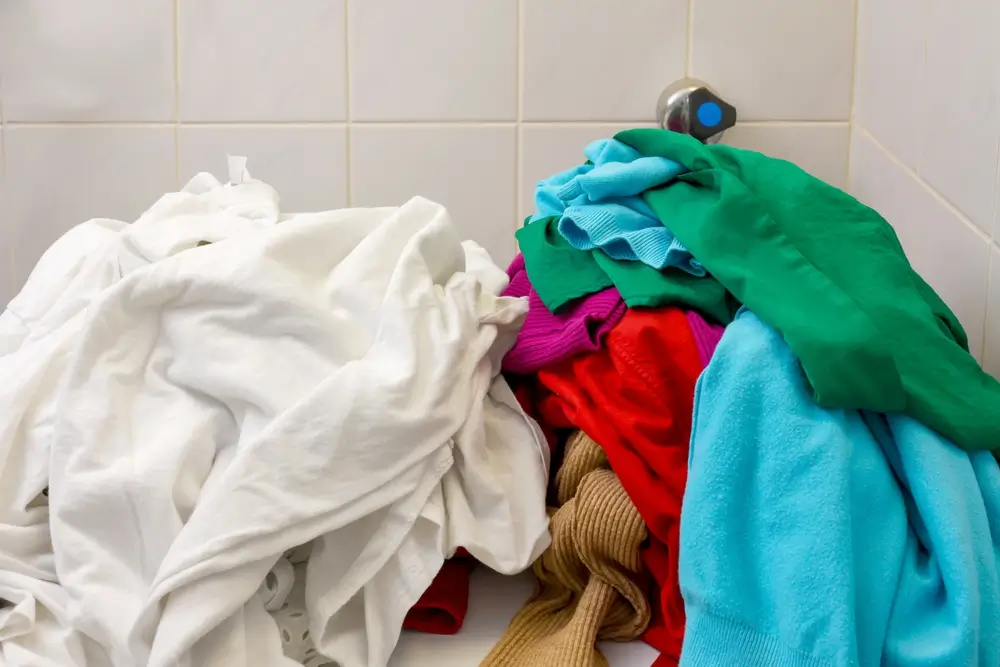
What Precautions Can You Take to Minimize Color Bleeding?
To keep your clothes looking new and prevent undesired color transfer, it’s essential to take a few precautionary steps. These measures can help maintain the quality of your garments and ensure that your laundry routine is as hassle-free as possible.
Sort by Color
Always separate your laundry into different color groups: whites, lights, darks, and brights. This reduces the risk of darker colors bleeding onto lighter ones. It’s a simple step that can save you a lot of frustration.
Sort by Fabric Type
Different fabrics dry at different rates and have varying susceptibilities to color bleeding. By sorting laundry by fabric type (cotton, synthetics, delicates), you can control the drying temperature more effectively and reduce the likelihood of mishaps.
Use Cold Water
Washing clothes in cold water can help minimize color bleeding. Cold water is less likely to cause dye to run from fabric, keeping your clothes’ colors vibrant and intact.
Use Color Catchers
Color catchers are a handy tool to absorb and trap loose dyes in the water, preventing them from settling on other clothes. These sheets can be thrown into both the washer and dryer with your load to act as an additional safety measure.
Turn Items Inside Out
Turning garments inside out before drying can help protect the outer layer, reducing direct heat exposure and friction, which can cause color bleeding and fabric wear.
Can You Use Vinegar or Other Home Remedies to Set Colors?
Home remedies like white vinegar, salt, or baking soda are often recommended for setting colors. Vinegar can help lock in dye and prevent bleeding when added to the rinse cycle. However, always follow fabric care instructions and test on a small area first to avoid potential damage.
Is Pre-Treating Necessary for Preventing Color Transfer?
Pre-treating new or vulnerable fabrics with commercial products designed to lock in color can be an effective strategy. These products are available in most stores and can be applied during the wash cycle to further secure the dye within the fabric fibers, reducing the risk of color transfer during drying.
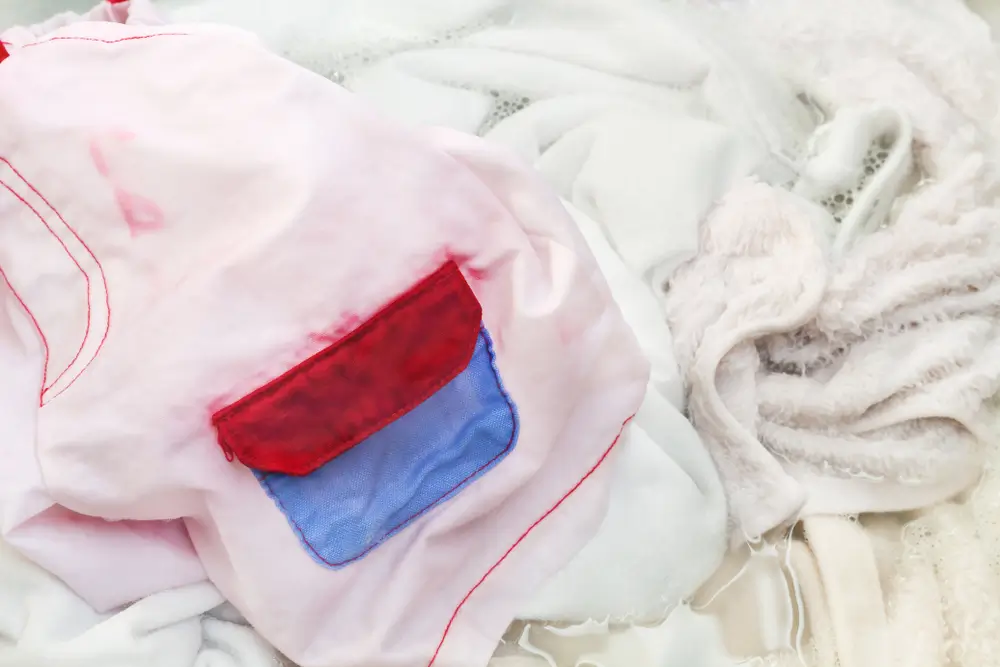
What Should You Do If Color Bleeding Occurs During Drying?
If you notice color bleeding during or after drying, act quickly. Rewash the affected items separately using cold water and a color-safe bleach or a specialized stain remover designed for dye transfers. This might not completely reverse the issue, but it can significantly minimize the damage.
FAQs
Let’s address some common questions about drying different colored clothes together.
Can you dry colored and white clothes together?
It’s generally not recommended to dry colored and white clothes together due to the high risk of color bleeding. Whites should be dried separately to maintain their brightness.
Do colors bleed in the washer or dryer?
Colors can bleed in both the washer and the dryer. However, washing is more likely to cause bleeding since garments are submerged in water, which can dissolve and spread dyes.
Can you wash colors with whites?
It’s best to wash colors separately from whites to prevent any accidental dye transfer, which can result in your whites picking up unwanted shades of other colors.
What colors can you wash together?
It’s usually safe to wash similar colors together—blacks with darks, pastels with lights, and reds with reds. Always read garment care labels to make informed decisions.
Mastering Laundry Day at Your 24/7 Laundromat in Corpus Christi
Taking careful steps to prevent color bleeding and understanding your fabrics can extend the life of your clothes and keep them looking their best.
For the ultimate convenience in taking care of your laundry, especially when dealing with large loads or tricky fabrics, visit a reliable 24/7 laundromat in Corpus Christi like SpinXpress. SpinXpress offers a range of services and facilities to meet all your laundry needs, ensuring that each garment receives the care it deserves.

